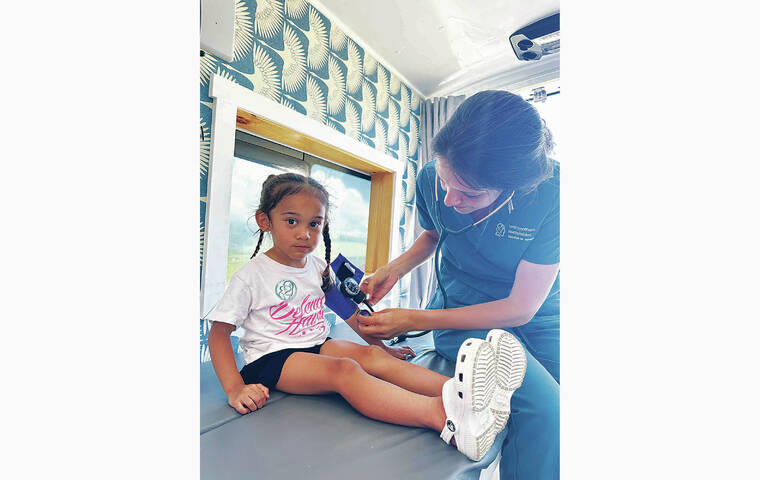By Victoria Budiono
Copyright staradvertiser

Hawaii’s health, social service and cultural nonprofits are operating under a cloud of uncertainty as sweeping federal policy changes ripple through the state. From frozen grants to potential cuts to federal safety-net programs, agencies face a complex set of challenges that threaten not only their operations but also the communities they serve.
A recent study conducted by the University of Hawaii at Manoa’s Thompson School of Social Work and Public Health surveyed 24 nonprofit leaders across the islands and found that operational disruption and related anxiety was already evident, even before major funding losses mandated by the Trump administration had landed.
“The executive orders definitely increased uncertainty and distraction and created a shift in their operational focus. As a result, this placed a psychological toll on the agencies,” said Wendy Lum, one of the researchers involved in the study.
Executive orders and other federal actions have forced nonprofit leaders to anticipate potential losses while continuing to deliver essential services. “In addition to direct losses of funding or support, the uncertainty has been harmful to agencies trying to build for the future,” she added.
The study found that while only a minority of agencies had experienced immediate funding cuts, almost all leaders reported heightened stress among staff and management. Agencies were forced to rapidly navigate changing budgets, reallocate staff due to terminations or paused funding streams, and seek new sources of support.
Many organizations leaned on collaboration, building new coalitions or strengthening existing networks to coordinate services, refer clients and share resources when one agency was stretched thin.
For organizations like Healthy Mothers Healthy Babies, which serves mothers and families across Hawaii, the stakes are immediate and deeply personal.
Sunny Chen, the group’s executive director, described the pressure facing both the nonprofit’s staff and the people they serve.
“The stress is palpable — in my own life and in conversations with friends and colleagues across maternal, child and reproductive health,” Chen said. “There is a deep sadness and fatigue that comes from trying to hold up families while feeling like the ground is constantly shifting beneath us.”
The work of Healthy Mothers Healthy Babies relies heavily on federal programs that provide essential resources for low-income and immigrant families. These include Medicaid, the WIC supplemental nutrition program for women, infants, and children, and SNAP, the Supplemental Nutrition Assistance Program.
Cuts or delays in these programs have immediate consequences: fewer groceries, longer waits for medical care and increased stress on families already struggling in Hawaii’s high-cost environment.
Chen said the ripple effect extends beyond her organization.
“Families in Hawaii are already stretched to the breaking point by the highest cost of living in the nation. Cuts to safety-net programs mean they simply can’t make ends meet.”
The UH study highlights how nonprofits across the state are attempting to adapt to the new order. Leaders reported exploring new funding avenues, including local philanthropic support, private partnerships and state resources, while also preparing contingency plans for potential program reductions.
Collaboration has been central to these efforts. Nonprofits share referrals, coordinate service delivery and jointly advocate for policy solutions, building a more resilient network in the process.
Keone Kealoha, executive director of Kanu Hawaii, emphasized that federal policy shifts are affecting a broad spectrum of nonprofit work, from cultural preservation and environmental programs to disaster resilience and climate initiatives.
Federal grant freezes and uncertainty surrounding the future of the Federal Emergency Management Agency have left many organizations scrambling for financial stability. Smaller and mid-level nonprofits are particularly vulnerable as larger organizations pivot toward local foundation funding that traditionally supports them.
Kealoha’s organization has been working to create proactive local support systems, including school-based resilience hubs, food security programs and community coordination efforts, aimed at mitigating the impact of potential SNAP and Medicaid reductions.
Hawaii’s unique vulnerabilities amplify these challenges. The state faces the constant threat of natural disasters such as floods, volcanic eruptions, hurricanes and tsunamis, while also managing a multicultural, geographically dispersed population.
Kealoha pointed out that nonprofits are treating the federal uncertainty much like disaster preparedness by building local networks and community capacity before a crisis arrives. By organizing early, agencies hope to prevent families from reaching critical points of need and ensure that resources remain accessible.
The consequences of failing to adapt are serious. Nonprofit leaders report the stress experienced by their employees from layoffs, canceled projects and increased burnout.
The UH study noted that even just the anticipation of possible federal cuts, before any actual loss of funding, creates a significant psychological toll on staff and clients.
Lum said many workers in the nonprofit field experience vicarious trauma as they witness clients’ growing anxiety over the potential loss of benefits. Agencies serving vulnerable populations, including immigrants, LGBTQ+ communities, women and elders, are particularly affected.
Despite these pressures, leaders remain committed to their missions.
Lum observed that nonprofit agencies are strategically resisting pressures to compromise their core values, using transparent communication and collaboration to maintain service delivery. Agencies with diversified funding sources such as foundations, state funds and private donations are better positioned to withstand shocks, while others are innovating to strengthen their networks and mitigate potential gaps.
Chen described Healthy Mothers Healthy Babies’ response as both strategic and mission-driven.
“Collaboration is our lifeline. We work closely with funders, government entities within the DOH and DHS, health centers, doulas, mental health providers and insurers to strengthen the safety net,” she said. “We’re also part of coalitions that share resources and advocate together, because no single nonprofit can carry this burden alone.”
Kealoha echoed the importance of collaboration, noting that Hawaii’s nonprofit and community networks are drawing on cultural traditions of mutual aid and collective action. By strengthening partnerships among organizations, state agencies and local communities, nonprofits aim to build resilience against both federal uncertainty and the broader economic pressures facing the state.
Looking ahead, leaders stress that continued support for Hawaii’s nonprofit sector is critical. As federal funding shifts, local philanthropy, state resources and collaborative networks will play an increasingly vital role in sustaining the state’s health, social service and cultural safety nets.
Nonprofit leaders emphasize that maintaining services for vulnerable populations — including infants, mothers, elders and immigrant communities — will depend on careful planning and strong community coordination.
“What gives me hope is the resilience of Hawaii’s families and nonprofits,” Chen said. “Despite exhaustion and burnout, we continue to show up every day because families depend on us. I believe Hawaii can lead by protecting mothers and children even when federal support is uncertain.”



